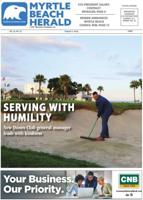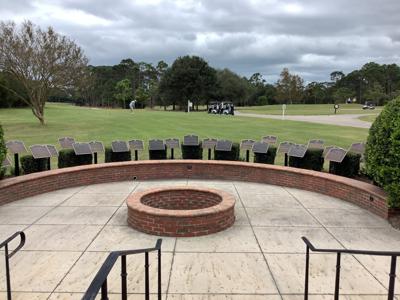Editor's note: This excerpt appears courtesy of On The Green Magazine. For more content like this, visit .
The consistently good conditions of Grand Strand golf courses over the past several decades is being celebrated with the 2025 class of the Myrtle Beach Golf Hall of Fame.
Dr. Bruce Martin, a longtime plant pathologist with Clemson University based at a research facility in Florence, and Arthur L. ãMaxã Morgan Jr., an area superintendent and director of agronomy for more than four decades, will be the next two inductees.
They will be the first members in the fields of agronomy and plant science in what will be a 38-person hall when they are enshrined on Sept. 24 at Pine Lakes Country Club, where the Hall of Fame Garden resides.
ãThey are both pioneers in golf course agronomy and their contributions behind the scenes ensured that millions of visitors could enjoy world-class playing conditions year-round,ã said Tracy Conner, executive director of the Myrtle Beach Area Golf Courses Owners Association, in a press release. ãTheir expertise, leadership and mentorship have helped shape the Grand Strandãs golf identity and their legacies will live on through the countless superintendents, agronomists and courses they influenced.ã
For several reasons, the Grand Strand is an area that is particularly difficult to maintain healthy grass. Its climate falls in a transition area for warm- and cool-weather grasses, which creates stress on both at different times of the year. Bermudagrass, the predominant grass on area courses, goes dormant in the winter and courses often overseed with cool-weather grasses rye and poa trivialis. The transition periods create stress on the grasses and require a lot of maintenance. The area also had dozens of courses through the 1990s with bentgrass greens, which were stressed in summer heat.
The coastal soil is sandy, which allows for drainage but also washes away soil nutrients such as nitrogen, potassium, calcium and phosphorus that are crucial for grass growth.
The area is often hit by tropical storms and hurricanes that damage and flood courses, and since a lot of area courses were built within housing developments, trees that have matured over the years on adjacent homeowner property restrict the sun and air flow that help Bermudagrass grow.
Martin and Morgan have been among the leaders in the area to overcome the challenges.
.











(0) comments
Welcome to the discussion.
Log In
Keep it Clean. Please avoid obscene, vulgar, lewd, racist or sexually-oriented language.
PLEASE TURN OFF YOUR CAPS LOCK.
Don't Threaten. Threats of harming another person will not be tolerated.
Be Truthful. Don't knowingly lie about anyone or anything.
Be Nice. No racism, sexism or any sort of -ism that is degrading to another person.
Be Proactive. Use the 'Report' link on each comment to let us know of abusive posts.
Share with Us. We'd love to hear eyewitness accounts, the history behind an article.